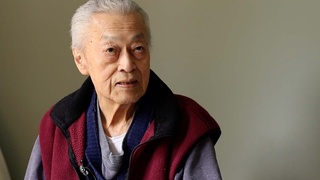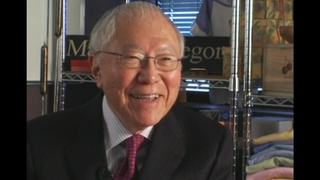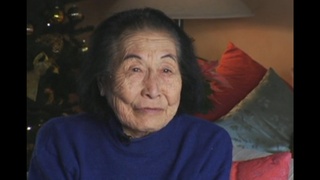Interviews
Training for football by carrying 100-lb bags of grass over mountains
When I was a ninth grade, I went to Lahainaluna. Where I was staying, I couldn't get transportation because it's six miles to Lahaina, and there's no transportation for me to go to school. So, I asked the coach that I could be a boarder and stay at the dormitory at Lahainaluna. So, they told me that they have room for me. So, I stayed at Lahainaluna two years, the freshman and sophomore year.
And my job there was every morning, I have to go and pick a hundred pound of grass to feed the cows because they had a farm there where they raise cows and pigs and chicken, ducks and lot of vegetables and things. See, they had about 125 boarders there, so they had to feed them and things. And a lot of times, the milk and lot of the eggs and things, they sell it -- go downtown and they sell it. So, that was my job. I'd get up 5 o'clock in the morning, my freshman, sophomore year, and I would go pick 100 pound. Sometimes I had to climb two mountains and 100 pounds on my back coming in. But, that really helped me in football because that really strengthened my legs.
Date: December 16, 2003
Location: Hawai'i, US
Interviewer: Art Hansen, John Esaki
Contributed by: Watase Media Arts Center, Japanese American National Museum.
Explore More Videos

Requested assignment in Europe to avoid combat in the Korean War
(b. 1935) Sansei businessman.

Taking over his father's business after father's accident
(b. 1935) Sansei businessman.

Family’s Japanese roots and values
Sansei judge for the Superior Court of Los Angeles County in California

Facing housing discrimination in Rhode Island
(1934–2018) Japanese American designer, educator, and pioneer of media technologies

Adjustment to American life
(b. 1938) Japanese American. Hiroshima atomic bomb survivor

Grandfather migrating to Colombia
(b.1974) Japanese Colombian who currently resides in the United States

Teacher who helped with lisp
(b.1926) Democratic politician and three-term Governor of Hawai'i

Politics in ethnic studies
(1926 - 2012) Scholar and professor of anthropology. Leader in the establishment of ethnic studies as an academic discipline

Teaching at the military language school during World War II
(b. 1924) Political scientist, educator, and administrator from Hawai`i

Lesson learned from community college faculty
(b. 1924) Political scientist, educator, and administrator from Hawai`i

Japanese school
(b.1924) Japanese Canadian Nisei. Interpreter for British Army in Japan after WWII. Active in Japanese Canadian community

Sugar-beets farm in Alberta
(b.1924) Japanese Canadian Nisei. Interpreter for British Army in Japan after WWII. Active in Japanese Canadian community

Strict school policy of separating boys and girls in Japan
(b.1920) Japanese Canadian Nisei. Established the Ikenobo Ikebana Society of Toronto

Growing up outside of Portland’s Japanese community
(b. 1921) Nisei businessman. Established "Made in Oregon" retail stores

Education in a Buddhist temple and a country school
(1914-2018) Founder of the largest gladiolus bulb farm in the United States.
